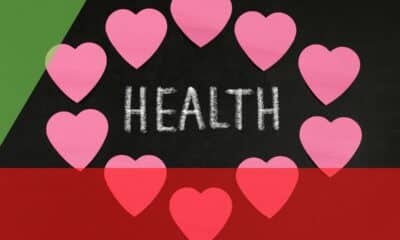Kaiser Health News
Possibility of Wildlife-to-Human Crossover Heightens Concern About Chronic Wasting Disease
Jim Robbins
Fri, 02 Feb 2024 10:00:00 +0000
Each fall, millions of hunters across North America make their way into forests and grasslands to kill deer. Over the winter, people chow down on the venison steaks, sausage, and burgers made from the animals.
These hunters, however, are not just on the front lines of an American tradition. Infectious disease researchers say they are also on the front lines of what could be a serious threat to public health: chronic wasting disease.
The neurological disease, which is contagious, rapidly spreading, and always fatal, is caused by misfolded proteins called prions. It currently is known to infect only members of the cervid family — elk, deer, reindeer, caribou, and moose.
Animal disease scientists are alarmed about the rapid spread of CWD in deer. Recent research shows that the barrier to a spillover into humans is less formidable than previously believed and that the prions causing the disease may be evolving to become more able to infect humans.
A response to the threat is ramping up. In 2023, a coalition of researchers began “working on a major initiative, bringing together 68 different global experts on various aspects of CWD to really look at what are the challenges ahead should we see a spillover into humans and food production,” said Michael Osterholm, an expert in infectious disease at the University of Minnesota and a leading authority on CWD.
“The bottom-line message is we are quite unprepared,” Osterholm said. “If we saw a spillover right now, we would be in free fall. There are no contingency plans for what to do or how to follow up.”
The team of experts is planning for a potential outbreak, focusing on public health surveillance, lab capacity, prion disease diagnostics, surveillance of livestock and wildlife, risk communication, and education and outreach.
Despite the concern, tens of thousands of infected animals have been eaten by people in recent years, yet there have been no known human cases of the disease.
Many hunters have wrestled with how seriously to take the threat of CWD. “The predominant opinion I encounter is that no human being has gotten this disease,” said Steve Rinella, a writer and the founder of MeatEater, a media and lifestyle company focused on hunting and cooking wild game.
They think, “I am not going to worry about it because it hasn't jumped the species barrier,” Rinella said. “That would change dramatically if a hunter got CWD.”
Other prion diseases, such as bovine spongiform encephalopathy, also known as mad cow disease, and Creutzfeldt-Jakob disease, have affected humans. Mad cow claimed the lives of more than 200 people, mostly in the United Kingdom and France. Some experts believe Parkinson's and Alzheimer's also may be caused by prions.
First discovered in Colorado in captive deer in 1967, CWD has since spread widely. It has been found in animals in at least 32 states, four Canadian provinces, and four other foreign countries. It was recently found for the first time in Yellowstone National Park.
Prions behave very differently than viruses and bacteria and are virtually impossible to eradicate. Matthew Dunfee, director of the Chronic Wasting Disease Alliance, said experts call it a “disease from outer space.”
Symptoms are gruesome. The brain deteriorates to a spongy consistency. Sometimes nicknamed “zombie deer disease,” the condition makes infected animals stumble, drool, and stare blankly before they die. There is no treatment or vaccine. And it is extremely difficult to eradicate, whether with disinfectants or with high heat — it even survives autoclaving, or medical sterilization.
Cooking doesn't kill prions, said Osterholm. Unfortunately, he said, “cooking concentrates the prions. It makes it even more likely” people will consume them, he said.
Though CWD is not known to have passed to humans or domestic animals, experts are very concerned about both possibilities, which Osterholm's group just received more than $1.5 million in funding to study. CWD can infect more parts of an animal's body than other prion diseases like mad cow, which could make it more likely to spread to people who eat venison — if it can jump to humans.
Researchers estimate that between 7,000 and 15,000 infected animals are unknowingly consumed by hunter families annually, a number that increases every year as the disease spreads across the continent. While testing of wild game for CWD is available, it's cumbersome and the tests are not widely used in many places.
A major problem with determining whether CWD has affected humans is that it has a long latency. People who consume prions may not contract the resulting disease until many years later — so, if someone fell sick, there might not be an apparent connection to having eaten deer.
Prions are extremely persistent in the environment. They can remain in the ground for many years and even be taken up by plants.
Because the most likely route for spillover is through people who eat venison, quick testing of deer and other cervid carcasses is where prevention is focused. Right now, a hunter may drive a deer to a check station and have a lymph node sample sent to a lab. It can be a week or more before results come in, so most hunters skip it.
Montana, for example, is famous for its deer hunting. CWD was first detected in the wild there in 2017 and now has spread across much of the state. Despite warnings and free testing, Montana wildlife officials have not seen much concern among hunters. “We have not seen a decrease in deer hunting because of this,” said Brian Wakeling, game management bureau chief for the Montana Department of Fish, Wildlife & Parks. In 2022 Montana hunters killed nearly 88,000 deer. Just 5,941 samples were taken, and 253 of those tested positive.
Experts believe a rapid test would greatly increase the number of animals tested and help prevent spillover.
Because of the importance of deer to Indigenous people, several tribal nations in Minnesota are working with experts at the University of Minnesota to come up with ways to monitor and manage the disease. “The threat and potential for the spread of CWD on any of our three reservations has the ability to negatively impact Ojibwe culture and traditions of deer hunting providing venison for our membership,” said Doug McArthur, a tribal biologist for the White Earth Nation, in a statement announcing the program. (The other groups referenced are the Leech Lake Band of Ojibwe and Red Lake Band of Chippewa.) “Tribes must be ready with a plan to manage and mitigate the effects of CWD … to ensure that the time-honored and culturally significant practice of harvesting deer is maintained for future generations.”
Peter Larsen is an assistant professor in the College of Veterinary Medicine at the University of Minnesota and co-director of the Minnesota Center for Prion Research and Outreach. The center was formed to study numerous aspects of prions as part of the push to get ahead of possible spillover. “Our mission is to learn everything we can about not just CWD but other prionlike diseases, including Parkinson's and Alzheimer's disease,” he said. “We are studying the biology and ecology” of the misfolded protein, he said. “How do prions move within the environment? How can we help mitigate risk and improve animal health and welfare?”
Part of that mission is new technology to make testing faster and easier. Researchers have developed a way for hunters to do their own testing, though it can take weeks for results. There's hope for, within the next two years, a test that will reduce the wait time to three to four hours.
“With all the doom and gloom around CWD, we have real solutions that can help us fight this disease in new ways,” said Larsen. “There's some optimism.”
KFF Health News is a national newsroom that produces in-depth journalism about health issues and is one of the core operating programs at KFF—an independent source of health policy research, polling, and journalism. Learn more about KFF.
USE OUR CONTENT
This story can be republished for free (details).
——————————
By: Jim Robbins
Title: Possibility of Wildlife-to-Human Crossover Heightens Concern About Chronic Wasting Disease
Sourced From: kffhealthnews.org/news/article/chronic-wasting-disease-deer-cervids-hunting-prions/
Published Date: Fri, 02 Feb 2024 10:00:00 +0000
Kaiser Health News
DIY Gel Manicures May Harm Your Health
Tarena Lofton
Thu, 02 May 2024 09:00:00 +0000
A fresh set from the comfort of your own home? DIY gel nails have been all the rage on social media, but the practice could cause you to develop a life-changing allergy. In a TikTok video, creator @alina.gene describes developing an acrylate allergy from doing gel nails at home. Now, when exposed to acrylates, the creator feels severe pain.
The creator warns viewers not to self-apply nail polish that requires a UV light to cure. In later videos, @alina.gene explains that at-home use differs from in-salon use because salon professionals have access to higher-quality chemicals that are less likely to cause reactions and that they also have proper training on how to safely apply the products.
“I know I sound real dramatic because an allergy to gel nails or even an allergy to acrylates isn't going to kill you, but the thing is, in the wrong situation it could prevent you from getting lifesaving medical care,” said @alina.gene in another video. Common medical products contain acrylates, and developing this allergy can cause major issues in obtaining future medical care.
We asked an allergist to walk us through this viral video.
If you enjoyed this story from the KFF Health News social team, follow us on Instagram @KFFHealthNews.
✍️: KFF Health News Audience Engagement Team
——————————
By: Tarena Lofton
Title: DIY Gel Manicures May Harm Your Health
Sourced From: kffhealthnews.org/news/article/diy-gel-manicures-health-risks/
Published Date: Thu, 02 May 2024 09:00:00 +0000
Did you miss our previous article…
https://www.biloxinewsevents.com/robert-f-kennedy-jr-is-wrong-about-a-ban-on-nih-research-about-mass-shootings/
Kaiser Health News
Robert F. Kennedy Jr. Is Wrong About a Ban on NIH Research About Mass Shootings
Louis Jacobson, PolitiFact
Thu, 02 May 2024 09:00:00 +0000
“Congress prohibits the NIH from researching the cause of mass shootings.”
Robert F. Kennedy Jr. in an April 21 post on X
The National Institutes of Health is the federal government's main agency for supporting medical research. Is it barred from researching mass shootings? That's what presidential candidate Robert F. Kennedy Jr. said recently.
Kennedy, whose statements about conspiracy theories earned him PolitiFact's 2023 “Lie of the Year,” is running as an independent third-party candidate against President Joe Biden, the presumptive Democratic candidate, and the presumptive Republican nominee, former President Donald Trump.
On April 21 on X, Kennedy flagged his recent interview with conservative commentator Glenn Beck, which touched on gun policy. Kennedy summarized his gun policy views in the post, writing, “The National Institutes of Health refuses to investigate the mystery; in fact, Congress prohibits the NIH from researching the cause of mass shootings. Under my administration, that rule ends — and our kids' safety becomes a top priority.”
But this information is outdated.
In 1996, Congress passed the “Dickey Amendment,” an appropriations bill provision that federal officials widely interpreted as barring federally funded research related to gun violence (though some observers say this was a misinterpretation). Congress in 2018 clarified that the provision didn't bar federally funded gun-related research, and funding for such efforts has been flowing since 2020.
Kennedy's campaign did not provide evidence to support his statement.
What Was the Dickey Amendment?
After criticizing some federally funded research papers on firearms in the mid-1990s, pro-gun advocates, including the National Rifle Association, lobbied to halt federal government funding for gun violence research.
In 1996, Congress approved appropriations bill language saying that “none of the funds made available for injury prevention and control at the Centers for Disease Control and Prevention may be used to advocate or promote gun control.” The language was named for one of its backers, Rep. Jay Dickey (R-Ark).
But the Dickey Amendment, as written, did not ban all gun-related research outright.
“Any honest research that was not rigged to produce results that helped promote gun control could be funded by CDC,” said Gary Kleck, a Florida State University criminologist. But CDC officials, experts said, interpreted the Dickey Amendment as banning all gun-related research funding.
This perception meant the amendment “had a chilling effect on funding for gun research,” said Allen Rostron, a University of Missouri-Kansas City law professor who has written about the amendment. Federal agencies “did not want to take a chance on funding research that might be seen as violating the restriction” and so “essentially were not funding research on gun violence.”
Also, the Dickey Amendment targeted only the CDC, not all other federal agencies. Congress expanded the restriction to cover NIH-funded research in 2011.
Although the Dickey Amendment didn't bar gun-related research, federal decision-makers acted as though it did by not pursuing such research.
Moving Past the Dickey Amendment
Over time, critics of the gun industry made an issue of the Dickey Amendment and gathered congressional support to clarify the amendment.
In 2018, lawmakers approved language that said the amendment wasn't a blanket ban on federally funded gun violence research. By 2020, federal research grants on firearms began to be issued again, starting with $25 million to be split between the CDC and NIH.
By now, the CDC and NIH are funding a “large portfolio” of firearm violence-related research, said Daniel Webster, a professor at the Johns Hopkins Bloomberg School of Public Health.
Also, the Justice Department's National Institute of Justice has funded the largest study of mass shootings to date, Webster said, and is seeking applications for studies of mass shootings.
Our Ruling
Kennedy said, “Congress prohibits the NIH from researching the cause of mass shootings.”
Although the Dickey Amendment, a provision of appropriations law supported by the gun industry, didn't prohibit all federally supported, gun-related research from 1996 to 2018, decision-makers acted as though it did.
However, in 2018, Congress clarified the provision's language. And since 2020, CDC, NIH, and other federal agencies have funded millions of dollars in gun-related research, including studies on mass shootings.
We rate Kennedy's statement False.
Our Sources
Robert F. Kennedy Jr. post on X, April 21, 2024
National Institutes of Health, “NIH Awards Additional Research and Training Grants to Support Firearm Injury and Mortality Prevention Science,” Sept. 20, 2023
National Institute of Justice, “Public Mass Shootings: Database Amasses Details of a Half Century of U.S. Mass Shootings with Firearms, Generating Psychosocial Histories,” Feb. 3, 2022
National Institute of Justice, “NIJ FY24 Research and Evaluation on Firearm Violence and Mass Shootings,” Feb. 5, 2024
Centers for Disease Control and Prevention, “Funded Research,” accessed April 22, 2024
American Psychological Association, “A Thaw in the Freeze on Federal Funding for Gun Violence and Injury Prevention Research,” April 1, 2021
Allen Rostron, “The Dickey Amendment on Federal Funding for Research on Gun Violence: A Legal Dissection” (American Journal of Public Health), July 2018
Email interview with Gary Kleck, a Florida State University criminologist, April 22, 2024
Email interview with Daniel W. Webster, professor at the Johns Hopkins Bloomberg School of Public Health, April 22, 2024
Email interview with Jaclyn Schildkraut, executive director of the Regional Gun Violence Research Consortium at the Rockefeller Institute of Government, April 22, 2024
Email interview with Mike Lawlor, University of New Haven criminologist, April 22, 2024
Email interview with Allen Rostron, University of Missouri-Kansas City law professor, April 22, 2024
KFF Health News is a national newsroom that produces in-depth journalism about health issues and is one of the core operating programs at KFF—an independent source of health policy research, polling, and journalism. Learn more about KFF.
USE OUR CONTENT
This story can be republished for free (details).
——————————
By: Louis Jacobson, PolitiFact
Title: Robert F. Kennedy Jr. Is Wrong About a Ban on NIH Research About Mass Shootings
Sourced From: kffhealthnews.org/news/article/fact-check-rfk-jr-wrong-nih-research-mass-shootings-gun-control-dickey-amendment/
Published Date: Thu, 02 May 2024 09:00:00 +0000
Did you miss our previous article…
https://www.biloxinewsevents.com/breaking-a-promise-california-deficit-could-halt-raises-for-disability-workers/
Kaiser Health News
‘Breaking a Promise’: California Deficit Could Halt Raises for Disability Workers
Vanessa G. Sánchez
Thu, 02 May 2024 09:00:00 +0000
SACRAMENTO, Calif. — Families of people with intellectual and developmental disabilities say Gov. Gavin Newsom is reneging on a scheduled raise for the workers who care for their loved ones, and advocates warn of potential lawsuits if disability services become harder to get.
Citing California's budget deficit, the Democratic governor wants to save around $613 million in state funds by delaying pay increases for a year for about 150,000 disability care workers. The state will forgo an additional $408 million in Medicaid reimbursements, reducing funding by over $1 billion.
Some lawmakers say this decision will increase staff turnover and vacancies, leaving thousands of children and adults with disabilities without critical services at home and in residential facilities. Disability advocates warn it could violate the Lanterman Act, California's landmark law that says the state must provide services and resources to people with disabilities and their families.
Newsom is “breaking a promise,” said Felisa Strickland, 60, who has been searching for more than a year for a day program for her 23-year-old daughter, Lily, who has autism and cerebral palsy. “It's creating a lot of physical and mental health problems for people, and it's a lot of undue stress on aging parent caregivers like myself.”
Disability care workers, known as direct support professionals, provide daily, hands-on caregiving to help children and adults with intellectual and developmental disabilities, such as autism, cerebral palsy, and epilepsy, remain independent and integrated into their communities.
In California, more than 400,000 people with disabilities need accommodation, and this population, along with seniors, is increasing. It's not clear how big the worker shortage is because the state hasn't released workforce data. As the demand for these workers grows generally, experts predict a shortage of between 600,000 and 3.2 million direct care workers by 2030.
Advocates say California pays most providers from $16 to $20 an hour, which meets the state's minimum wage but falls short of what some economists consider a living wage. In 2021, the state committed to raising wages after identifying a $1.8 billion gap between the rates received by nonprofits that contract with the state to provide care and the rates deemed adequate.
Thus far, the state has provided around half that total, most of which has gone to raising wages and benefits. Workers had been expecting one more increase, of $2-$4 an hour, in July, until Newsom proposed a delay.
Also, nonprofits say California has made it harder to compete for workers after raising wages in other service and health industries. Newsom approved a $20 minimum wage for fast-food workers that went into effect in April and he struck a deal last year with unions and hospitals to begin raising health care workers' wages to a minimum of $25 an hour.
Ricardo Zegri said Taco Bell would pay him more than the $19 an hour he makes as a disability care worker in a supervisory position.
“Every paycheck, it's a discussion at home about what bills we need to prioritize and whether it's time to start looking for work that pays more,” said Zegri, who works a second job as a musician in the San Francisco Bay Area.
Newsom wants to preserve key health initiatives, including the state expansion of Medi-Cal to low-income immigrants regardless of legal status, and CalAIM, an ambitious $12 billion experiment to transform Medi-Cal into both a health insurer and a social services provider. However, the rate delay for providing disability care is the largest savings in the Health and Human Services budget as Newsom and legislative leaders look to cuts, delays, and shifts in funding to close a deficit estimated between $38 billion and $73 billion.
Dozens of legislators from both parties are asking Newsom and legislative leaders to preserve the increase. Assembly member Stephanie Nguyen, a Democrat from Elk Grove, signed a letter supporting the raise. Although lawmakers are negotiating with the administration, she said reversing the decision to delay the pay boost is unlikely. Everybody “has to take a hit somewhere,” Nguyen said.
Krystyne McComb, a spokesperson for the Department of Developmental Services, said even though the state would lose federal matching funds this year, it would resume drawing funds when the state reinstates the plan in 2025.
The department did not respond to questions about how it plans to retain workers and fill vacancies.
Newsom's proposal risks a collapse of the disability service system, which would violate the Lanterman Act and make the state vulnerable to lawsuits, said Jordan Lindsey, executive director of the Arc of California, a statewide disability rights advocacy organization.
Families say the state has already fallen short on services they need. Strickland quit her job to care for Lily, the Santa Barbara mother said. “It's not reasonable to expect someone to care for somebody else 24 hours a day, seven days a week,” she said.
Lily graduated from high school and in 2022 completed a program that prepares youth with disabilities to transition into adult life. She had been looking forward to joining a day program to make new friends but has yet to find a spot. And due to a shortage of workers, Lily receives only four hours a week at home with a provider, who is paid around $16 an hour.
When Lily hangs out with the provider, her demeanor changes to the happy person she used to be, Strickland said.
“The system is already in crisis,” she said. “There are tons and tons of people that are sitting at home because there's nowhere for them to go.”
——————————
By: Vanessa G. Sánchez
Title: ‘Breaking a Promise': California Deficit Could Halt Raises for Disability Workers
Sourced From: kffhealthnews.org/news/article/california-disability-worker-pay-delay-deficit/
Published Date: Thu, 02 May 2024 09:00:00 +0000
-
Mississippi Today4 days ago
On this day in 1951
-
Mississippi News5 days ago
One injured in Mississippi officer-involved shooting after chase
-
SuperTalk FM3 days ago
Festival merger in Leland sets up one major event for Mississippi Delta
-
Mississippi News2 days ago
Two women accused of shoplifting across southeast captured in Mississippi
-
SuperTalk FM3 days ago
PERS bill set to phase in employer rate increase heads to governor’s desk
-
Mississippi News7 days ago
Ridgeland man sentenced for molesting girl
-
Mississippi Business1 day ago
Geartek expanding operations in Alcorn County
-
Mississippi News Video7 days ago
Vehicle fire blocks all lanes of I-55 South in Hinds County







































